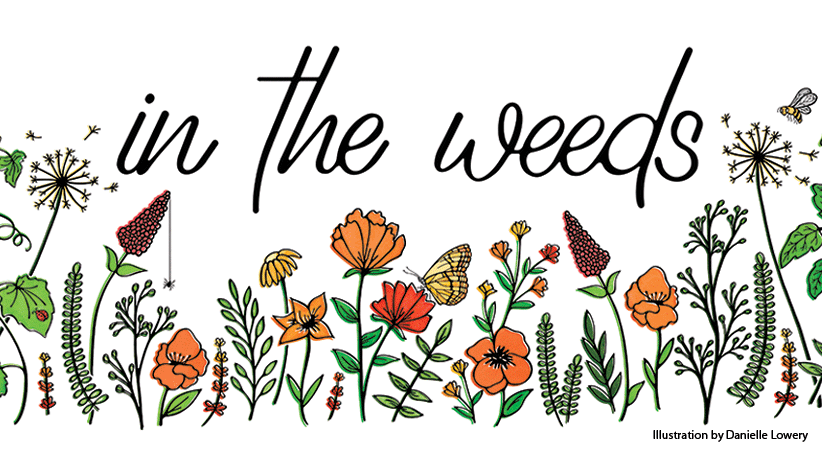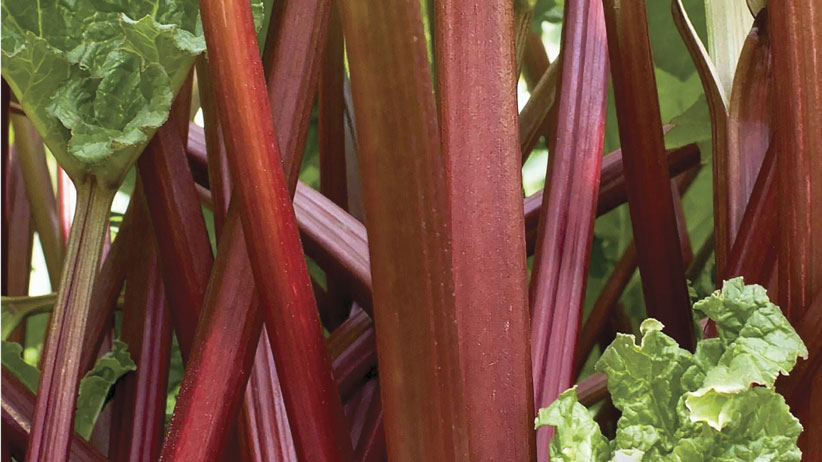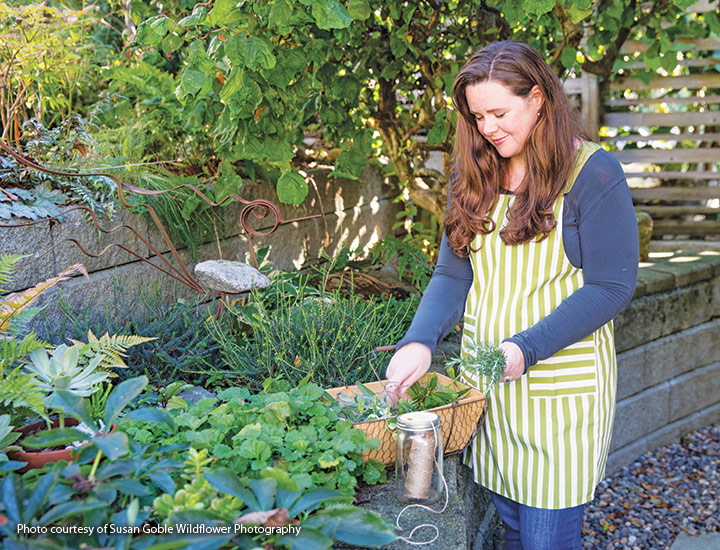
Herbal helpers
Imagine taking a deep breath in a gorgeous herb garden on a sunny day. Now imagine that you could bottle that fresh air and somehow use it to scent and sanitize your home. It is possible! Just ask Stephanie Rose.
Stephanie uses all-natural, handmade cleaning agents at her home in British Columbia, Canada. Today a Master Gardener, permaculture designer and trained herbalist, Stephanie began her garden journey after a sudden illness left her bedridden in 2006.
“I used gardening as rehabilitation,” she recalls, explaining that tending plants in her Vancouver yard helped her strengthen her body and her mind after many months of exhaustion. Gardening also led her to learn ways to avoid harsh chemicals that might trigger or exacerbate her health troubles. Pointing out that store-bought housekeeping and self-care products often contain an endless list of unfamiliar — and unpronounceable — chemicals, she explains: “I researched plants instead of researching those thousands of product ingredients. My path has been falling in love with plants, and then finding their healing powers.”
For more natural housekeeping recipes from Stephanie Rose, look for her book Handmade Soaps, Sanitizers, and Cleaners.
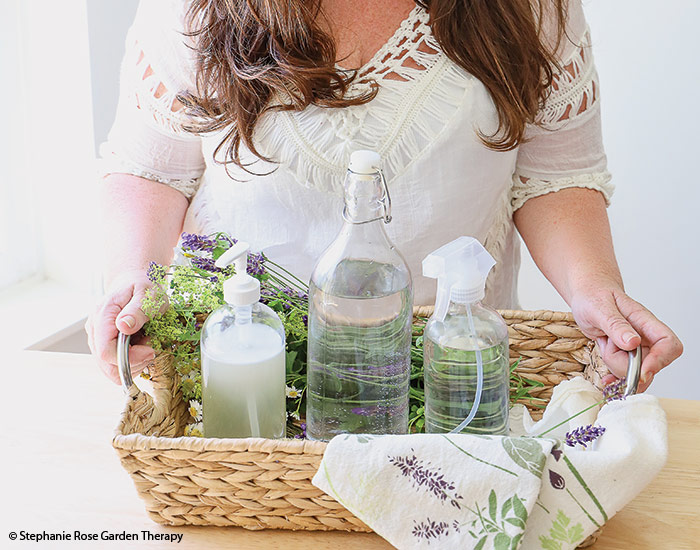
Start with simple ingredients
What kinds of things find their way into Stephanie’s cleaning sprays, laundry items and bathroom refreshers? “It’s all regular kitchen stuff that you can infuse with materials from the garden,” she says.
Recipes typically start with ingredients already waiting in the cupboard including:
- Distilled white vinegar, whose acidity cuts grease
- Alcohol, which can tackle germs
- Baking soda, a natural abrasive
Whether a mixture starts with vinegar or alcohol often depends on the surface it’s meant to clean. “Vinegar shouldn’t be used on shiny or smooth surfaces, like granite and window glass,” Stephanie says, explaining that it leaves them with streaks. Alcohol-based cleaners are much more compatible with those materials, but vinegar can be used for great results on wood. She relies on isopropyl alcohol when creating virus-killing solutions or a weaker alcohol, such as vodka, when the aim is to eliminate bacteria.
You Might Also Like:
Reduce Stress by Getting out in the Garden
5 Easy Herbs to Grow
Front Yard Vegetable Garden Plan
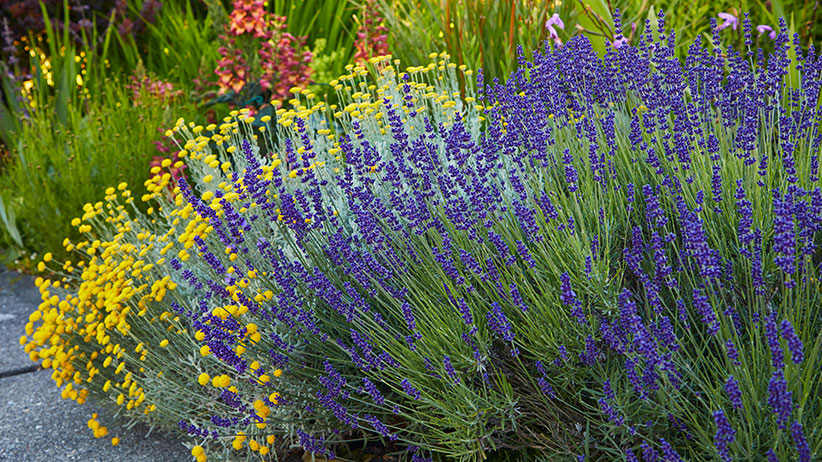
Infuse with garden herbs
The fun part comes when she adds herbal elements, sometimes direct from plants and other times as an essential oil. But these items, too, serve specific purposes beyond smelling nice. For instance, citing her Orange and Sage All-Purpose Cleaner (see the recipe below), Stephanie says that “sage acts as an aromatic to bring down the vinegar scent, but it’s also antibacterial. The Ancient Greeks used it to preserve meat.”
Lavender is an even better example, since it has become such a popular “ingredient” in mainstream household products. “Laundry-detergent manufacturers are definitely onto it,” notes Stephanie of the perennial’s appealing aroma, “but they’re usually using artificial fragrance.” In so doing, these items lack real lavender’s key properties: “It’s an amazing antiseptic, antimicrobial and antifungal,” she says. That’s why true lavender-based sprays and sachets like her Lavender Dryer Bags stop items from becoming musty.
Lavender infusion tip
She adds a caveat when working with lavender, though. “If you infuse its flower buds, the liquid will turn brown,” she says. That’s why an essential oil can be a better choice for some recipes. However, soaking the foliage does not cause a color change. “I trim my lavender three times a year to encourage its growth, and I use those leaves,” she says. She adds that among lavenders, English lavender offers the best balance of aroma and cleaning properties. Along with sage, lavender is one of Stephanie’s favorite herbs to work with.
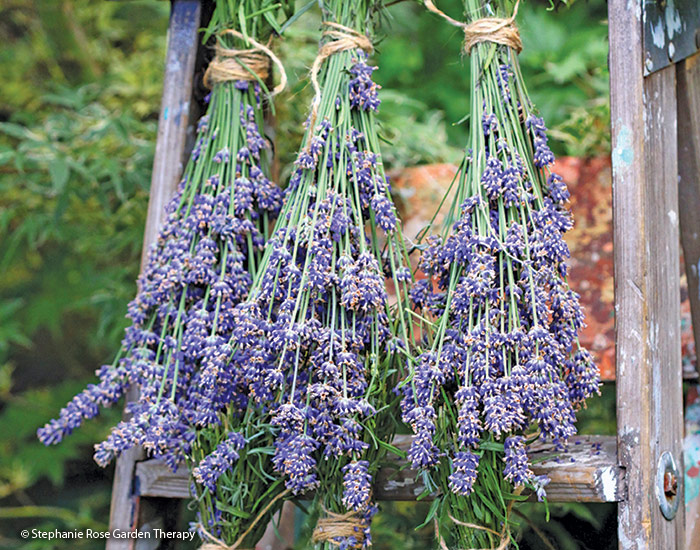
Preserving herbs
Whatever herbs you grow, it’s helpful to know a few ways to preserve them for later use.
Air-drying herbs
- To dry them, simply tie handfuls of cut stems together and hang them upside down in a warm, dry, shaded place, such as an attic, garage or a sheltered spot outside.
- Once they’re completely dry, which may be in as little as a week depending on humidity, strip the leaves and put them in an air-tight container.
- Dried herbs will keep for about a year when stored in this way.
Drying herbs with a dehydrator
- For a faster drying method, she recommends using a food dehydrator, not the oven, which she feels is too harsh for delicate herbs even on its lowest heat.
Preserve in vinegar
- To preserve an herb’s flavor, just stuff a mason jar with fresh herbs and fill it with white vinegar.
- Let it sit for two weeks, then strain the liquid, discarding the herbs.
- Use this deeply flavorful herbal vinegar to dress vegetables or make amazing salad dressings.
You Might Also Like:
Small Vegetable Garden Ideas
How to Create Flavored Oils with Garden Herbs
DIY Lavender Sugar Scrub
Natural housekeeping ideas from Stephanie Rose
Find three creative ideas to try in your home that utilize natural ingredients right from your garden!
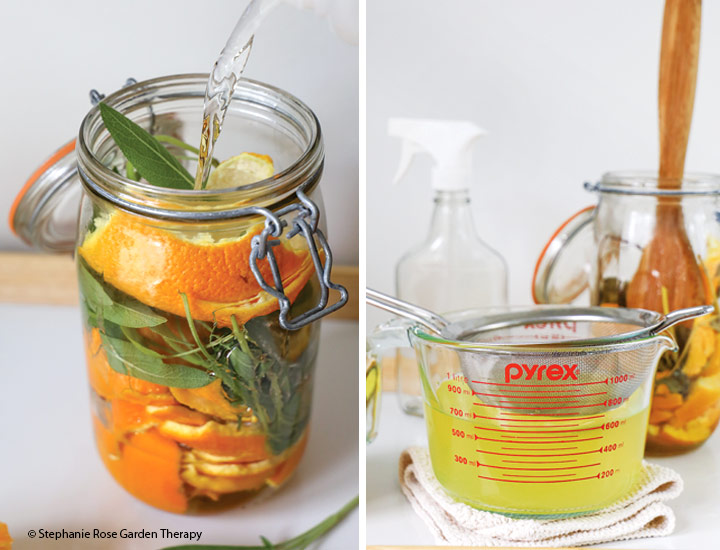
Orange and Sage All-Purpose Cleaner
This recipe combines the powerful cleaning ability of vinegar with the delicious scents of orange rinds and fresh garden sage. The orange peels also “contain citric acid, which helps the acidic vinegar dissolve greases and other grime,” Stephanie adds. Anytime Stephanie eats an orange, she pops its rind into a jar of vinegar for continual concocting.
Materials
- Peels of 4 to 5 large oranges
- Handful of fresh sage leaves
- 6 cups distilled white vinegar (5% acidity)
- Two 67-ounce (2 Liter) lidded jars
- Strainer
How to make it
- Fill one mason jar with orange peels and sage.
- Top with white vinegar, seal the lid, and store in a cool, dark place for one week.
- Then strain the liquid into the second mason jar. Store unused portions in a cool, dark place.
- This is your cleaning concentrate, which can now be diluted to different strengths for different jobs.
- The concentrate should be used within six weeks, so Stephanie recommends sticking with small batches.
Best uses for Orange and Sage All-purpose cleaner
- To cut grease and remove soap scum, combine 1 part concentrate with 1 part water in a spraybottle, shake, spray and wipe.
- To clean counter tops, use 1 part concentrate and 3 parts water.
- For mopping floors (not hardwood), add 1/2 cup of the concentrate to 3 gallons of warm water.
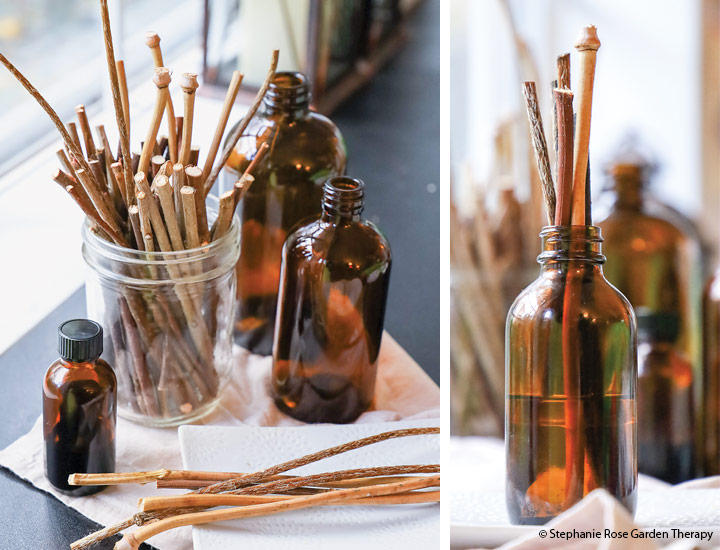
Natural Reed Diffusers
Stephanie likes using essential oils to impart a more gentle aroma to her home, but she was disappointed by the chemical-smelling, short-lived reed diffusers sold at stores. So she began making her own.
Materials
- Essential oil(s) of your choice
- A thin “carrier” oil, such as sunflower or grapeseed oil
- Isopropyl alcohol
- Handful of flower stalks, such as poppy, daylily, or coneflower
- Glass bottle with a narrow opening
How to make your own reed diffusers
- Remove leaves, soil and spent flowers from the gathered flower stalks. Bake the cleaned stalks in the oven at 200 degrees F for 25 to 60 minutes until completely dried.
- Fill the bottle about halfway using a mixture of essential and carrier oils.
- The ratio should be 30 percent essential oil to 70 percent carrier oil. Add a few drops of isopropyl alcohol, which thins the mixture.
- Finally, fill the bottle opening with as many homemade reed diffusers as will fit. Turn the reeds over once a week to refresh the scent, and replace the oil once a month.
You Might Also Like:
Jar Lantern Project
DIY Garden Gift Ideas
Upcycled Vertical Pallet Planter
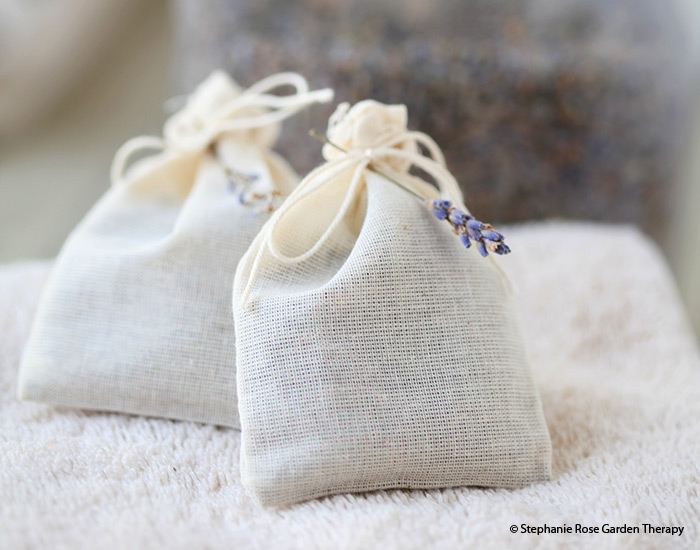
Lavender Dryer Bags
Stephanie notes that the small muslin bags she uses are often sold as “bouquet garni bags” for soaking herbs in soups and stews. They measure roughly 3 x 4 inches. If you enjoy sewing, you can make your own bags out of cotton fabric.
Materials
- Dried lavender flower buds
- Drawstring muslin bags
How to make lavender dryer bags
Fill the muslin bag to the top with the dried lavender and tie the drawstring tightly closed. Toss one into the dryer along with your laundry. If you’d like to experiment with mixing scents, just dot the muslin bag with a few drops of an essential oil before starting the dryer.
Each bag can typically be used 10 times before the lavender loses scent. If the bag is still in good shape, you can refill it.













